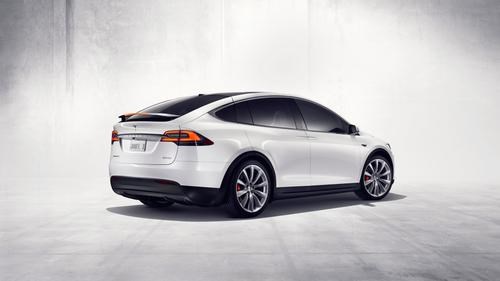A biweekly roundup of automotive news, good, bad and just plain weird:
Tesla Autopilot saves a life
While controversy continues to swirl around whether the world is ready for fully autonomous vehicles, the semi-autonomous car is already beginning to prove its worth. Tesla is currently fighting off a storm of criticism over crashes involving its Autopilot driver assist (most of which seem to be human rather than computer error), but in at least one case, the system seems to have made the difference between life and death.
According to Slate.com, attorney Joshua Neally was headed home from work to his house in Branson, Mo., when he suffered a pulmonary embolism. Luckily for Neally, he happened to be behind the wheel of his Model X, with its Autopilot system on.
Despite having his driving capabilities severely reduced, Neally was able to use Autopilot to get him 30 kilometres down the road and into the parking lot of a hospital just off the highway. The car’s driver assist functions helped him navigate despite the crippling pain.
Never mind the self-driving car, this is an example of how the semi-autonomous car will end up saving lives. With an aging population behind the wheel, the ability of a car to make up for an incapacitated driver will become ever more important. Maybe far off in the future, that car will know enough to drive you right to the hospital itself, but in the more immediate present, at least the smartest cars out there can help prevent a crash.
Japan approves the mirrorless car
In other tech news, Japan has approved the use of camera-based systems in cars to replace the side mirror. While no manufacturer has yet steeped forward to take advantage of the recent update to Japanese road requirements, there are any number of advantages to going mirrorless.
For one thing, a physical side-view mirror causes a significant amount of aerodynamic drag on a car. They also generally provide a limited amount of viewing area, and can have blind-spots if improperly set.
A camera could show a number of different views, including a wide-angle to eliminate blind-spots. With tough new efficiency requirements coming in the next decade, the reduced drag will help automakers reach economy targets.
Of course, it’s also just another thing to break, and you still have to get drivers to actually use them properly. Still, look forward to not having to squeeze around all those mirrors on the car deck of a B.C. Ferry some time in the not-too-distant future.
Porsche crossover coupe tester spotted
And now for some distinctly less pleasant news from the future. Instead of working on a svelte new sporting machine, Porsche appears to be developing a coupe-styled four-door crossover that’s a cross between the Panamera and the Cayenne.
Oh no. Not another one of these stupid things – what’s wrong with just a regular Cayenne? Are companies required by law to build less-useful versions of cars that are perfectly fine in the first place? Why not spend the money on a compact sedan to compete with the BMW 3 Series? Or a reborn version of the 928?
Well anyway, brace yourself for a Cayenne Coupe, cutting you off in traffic sooner than you expect.
Camaro ZL1 arrives, is ridiculous
As we wait for the future to arrive, Chevrolet and Ford continue to offer the past as well. Not too interested in self-driving electric cars or camera-based mirrors? How about a 650 h.p. Camaro then?
The ZL1 Camaro gets a supercharged 6.2-litre making 650 h.p., 650 foot-pounds of torque, and a whole lotta noise. You’ll be able to get a manual version, of course, but there’s also a new 10-speed automatic transmission. The combination is capable of running through the quarter-mile in a claimed 11.4 seconds.
The ZL1 should also handle really well too, thanks to GM’s still and light Alpha platform, magnetically adjustable suspension, and wide high-performance tires. It’ll pull more than a g in the corners, and can stop from 100 kilometres per hour in about 33 metres.
Ford, meanwhile, isn’t taking all this supercharged Chevy stuff lying down. The GT500 version of their Mustang has been spotted roaming around Dearborn, Mich. The old GT500 had 662 supercharged horsepower, but wasn’t much in the handling department. The new car has the same bones as the track-special GT350 – will it be enough to best the Camaro? The war started in the 1960s still rages.
Watch this space for all the week’s best and worst of automotive news, or submit your own auto oddities to [email protected].



